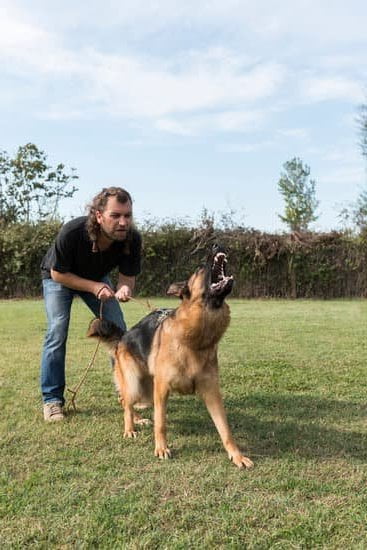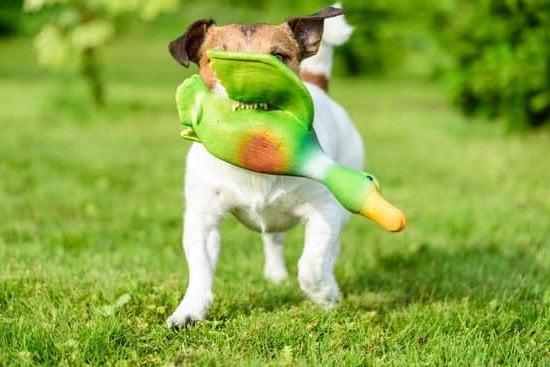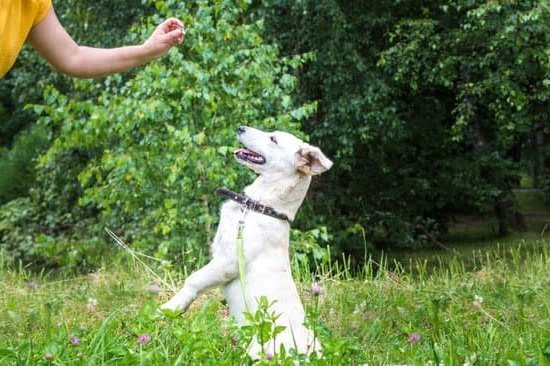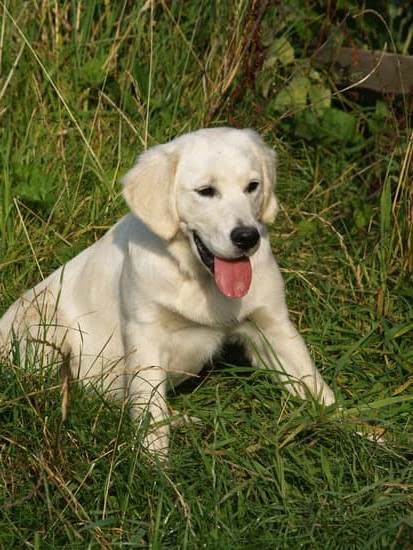Training an older dog to pee outside can be a challenging task, but it is not impossible. Whether you have adopted an elderly dog or your beloved pet has developed indoor accidents over time, understanding the challenge of training them to go outside is crucial.
This article will provide you with a step-by-step guide on how to train an older dog to pee outside, so you can create a positive and clean environment for both you and your furry companion.
As we age, our physical abilities and habits change, and dogs are no exception. Older dogs may have health issues or mobility limitations that make it difficult for them to hold their bladder or signal their need to go outside. Additionally, they may have developed ingrained behaviors or anxiety around going outside due to past experiences or lack of prior training. Understanding these challenges will help you approach the training process with patience and empathy.
The key to successfully training an older dog to pee outside lies in addressing the underlying factors that contribute to indoor accidents. By assessing your dog’s behavior and health, identifying any potential medical issues or emotional stressors, and establishing a consistent routine that meets their specific needs, you can create an environment that promotes successful outdoor bathroom habits.
Stay tuned for the following sections as we delve into each step in detail, offering practical tips and techniques to help you navigate this training journey with your older companion.
Assessing the Underlying Factors
One of the crucial steps in training an older dog to pee outside is understanding the underlying factors that contribute to indoor accidents. By identifying these reasons, you can effectively address them and help your dog successfully transition to going outside for their bathroom needs.
There are several potential reasons why your older dog may be having accidents indoors. Some common factors include medical issues, lack of proper training, changes in routine or environment, anxiety or stress, and aging-related bladder control problems. It is important to assess these factors before proceeding with any training methods.
Firstly, it is essential to rule out any potential medical issues that may be causing your dog’s indoor accidents. Schedule a visit with your veterinarian to ensure there are no underlying health conditions such as urinary tract infections or bladder stones. Addressing any medical problems will make it easier for your dog to learn new bathroom habits.
Next, consider whether your dog has received proper training in the past. If not, it may be necessary to go back to basic housebreaking techniques. Older dogs can learn new behaviors, but they may require more patience and consistency compared to puppies. Reinforcing proper elimination behavior through positive reinforcement techniques will be crucial during this stage.
Changes in routine or environment can also contribute to indoor accidents. Dogs are creatures of habit, and disruptions in their daily schedule or living environment can cause confusion and accidents. Take note of any recent changes that may have coincided with your dog’s change in elimination behavior. Restoring a consistent routine and providing a safe and familiar environment can help alleviate these issues.
In summary, assessing the underlying factors behind your older dog’s indoor accidents is a critical step towards successful bathroom training. By ruling out medical issues, retracing previous training steps if necessary, and addressing any changes in routine or environment, you can create an effective plan for teaching your older pup how to pee outside.
| Underlying Factors | Actions to Take |
|---|---|
| Potential medical issues | Schedule a visit with the veterinarian to rule out any underlying health conditions. |
| Lack of proper training | Go back to basic housebreaking techniques and reinforce proper elimination behavior through positive reinforcement. |
| Changes in routine or environment | Restore a consistent routine and provide a safe and familiar environment for your dog. |
Establishing a Consistent Routine
One of the key factors in successfully training an older dog to pee outside is establishing a consistent routine. A regular feeding and bathroom schedule can help your dog understand when it’s time to go outside and when they can expect their meals. By setting a routine, you are effectively teaching your dog how to control their bladder and bowels.
Start by designating specific times for feeding your dog. This will help regulate their digestion and create predictable bowel movements. Once you have determined the appropriate meal times, take your dog outside shortly after each meal to encourage them to pee outside. Keep in mind that dogs may need to eliminate multiple times throughout the day, so be prepared for additional bathroom breaks.
In addition to meal times, it is vital to establish a regular bathroom schedule. Take your older dog outside first thing in the morning, right before bedtime, and after any periods of prolonged confinement or naps. By creating this routine, you are providing your dog with consistent opportunities to relieve themselves outdoors instead of indoors. Remember that patience is essential during this process as it may take some time for your older dog to adjust to the new routine.
Reinforcing Positive Behavior
Reinforcing positive behavior is a crucial aspect of training an older dog to pee outside. By utilizing rewards and positive reinforcement techniques, you can enhance the effectiveness of your training and encourage your dog to make consistent progress.
Types of Rewards
Using rewards can be highly beneficial in motivating your older dog to learn new behaviors. When it comes to bathroom training, consider using small, easily consumable treats as rewards. Choose treats that are specifically designed for dogs and are low in calories to prevent overfeeding. Alternatively, you can also use verbal praise or playtime with their favorite toy as rewards. Be sure to use rewards immediately after your dog successfully eliminates outside to associate the behavior with positive reinforcement.
Timing is Key
Timing is essential when reinforcing positive behavior in an older dog. Dogs make associations between actions and consequences very quickly, so it’s important to reward them immediately after they perform the desired behavior. If there is a delay in providing the reward, your older dog may not understand what they are being rewarded for. Always keep treats accessible during the training sessions so that you can offer immediate reinforcement.
Consistency and Gradual Progression
Consistency is key when reinforcing positive behavior. Ensure that every time your older dog successfully eliminates outside, they receive a reward and enthusiastic praise. Over time, as your dog becomes more consistent with outdoor bathroom habits, you can gradually reduce the frequency of treats while still providing verbal praise or playtime as reinforcement. This helps reinforce that eliminating outside consistently leads to positive outcomes.
By utilizing rewards and positive reinforcement techniques, you can create a positive association with outdoor bathroom habits for your older dog. Remember that patience and consistency are essential throughout the training process. With time and effort, your older dog will develop good habits and become more comfortable going potty outside.
Introducing the Outdoors
Creating a Positive Association
When it comes to introducing the outdoors to an older dog during potty training, it is essential to create a positive association with the outside environment. Start by taking your dog for short walks in areas that are familiar and safe. Encourage your dog to explore and sniff around while ensuring they remain on a leash for their own safety.
To further establish a positive association, consider using treats or toys as rewards for venturing outside. Each time your dog shows interest in going outside or successfully eliminates in the designated area, provide praise and rewards as reinforcement. This positive reinforcement will help your older dog understand that going outside leads to pleasant experiences and rewards.
Patiently Exposing New Stimuli
During the early stages of introducing the outdoors, be patient with your older dog as they encounter new stimuli. It is common for dogs to be cautious or hesitant when faced with unfamiliar sounds, smells, or sights. Allow them time to adjust by gradually exposing them to different environments, such as parks or busy streets.
When exposing your older dog to new stimuli, be observant of their body language. If they seem anxious or overwhelmed, take a step back and slowly acclimate them at their own pace. Use gentle encouragement, soothing tones of voice, and reassurance to gradually build their confidence in exploring diverse outdoor settings.
Using Scent Markers
Scent markers can be incredibly helpful in familiarizing an older dog with the outdoors. Dabbing a small amount of urine from indoor accidents onto a piece of cloth or tissue can act as a scent marker when placed outside in the designated elimination area. The familiar scent will help trigger your dog’s instinctual behavior and assist them in understanding where they should eliminate.
Additionally, you can consider using natural attractants such as artificial grass patches specifically designed for dogs’ elimination needs. These patches contain pheromones that mimic the scent of grass and can help entice your older dog to pee outside. Place the attractant patch in the spot you want your dog to use and gradually move it closer to the final designated area, reinforcing positive behavior each time they successfully use it.
By gradually familiarizing your older dog with the outside environment through positive association, patiently exposing them to new stimuli, and utilizing scent markers or natural attractants, you can effectively train them to pee outside. Remember, consistency is key, and maintaining a calm and patient approach will help ensure success throughout the training process.
Supervised Outdoor Time
One crucial element of training an older dog to pee outside is providing supervised outdoor time. By closely monitoring your dog during their bathroom breaks, you can ensure that they are learning the appropriate behavior and reinforce positive habits. Here are some key steps to incorporate supervised outdoor time into your training routine:
- Implement a schedule: Establishing a regular schedule for supervised outdoor time is essential. Take your dog out for bathroom breaks at consistent intervals throughout the day, such as after meals or waking up from a nap. This routine will help them understand when it’s time to go outside and reduce the likelihood of accidents indoors.
- Choose an appropriate area: Selecting a designated spot in your yard where you want your dog to urinate will help them associate that space with potty time. Lead them directly to that area and wait patiently while they go, providing encouraging words or praise when they do so successfully.
- Remain present and attentive: During supervised outdoor time, it’s important to pay close attention to your dog’s behavior and body language. This allows you to intervene if they start displaying signs of needing to relieve themselves indoors or exhibit any confusion about what is expected of them. By being present, you can redirect them to the appropriate place outside and reward them for completing their business there.
Using these strategies during supervised outdoor time will facilitate effective bathroom training for your older dog. Remember, consistency is key, so be patient and persistent in reinforcing positive behavior.
- Always accompany your dog during outdoor bathroom breaks.
- Establish a regular schedule for potty breaks.
- Lead your dog directly to a designated potty area in the yard.
- Pay close attention to your dog’s behavior and body language.
- Intervene if necessary by redirecting your dog outside.
- Praise and reward your dog for using the designated potty area.
By implementing supervised outdoor time as part of your training routine, you are giving your older dog the guidance and structure they need to succeed in peeing outside. Be consistent in your approach, and celebrate their progress along the way. Remember, accidents may still happen, but with patience and persistence, your dog will eventually develop the habit of going potty outside.
Correcting Mistakes
Accidents are bound to happen during the process of training an older dog to pee outside. It is important to approach these accidents with patience and understanding, as punishing or scolding your dog for accidents can be counterproductive and undermine their progress. Instead, focus on using proper clean-up methods and reinforcing positive behavior to help your dog understand where they should be eliminating.
When accidents occur, it is crucial to react calmly and avoid displaying any frustration or anger toward your dog. This is because dogs do not associate punishment with their past actions, especially if there is a significant time gap between the accident and the punishment. Instead, focus on redirecting your attention to the correct behavior by using positive reinforcement techniques.
One effective method for handling accidents is to interrupt your dog during the act and quickly redirect them outside. This can be done by using a clear verbal cue such as “outside” or “go potty” while gently guiding them towards the designated bathroom area. Once they finish eliminating outside, praise and reward them enthusiastically.
In terms of clean-up, it is important to thoroughly remove any scent of urine or feces from indoor accidents as their lingering smell can encourage repeated marking or elimination in that spot. Use enzymatic cleaners specifically designed for pet messes to break down odor-causing enzymes effectively. Additionally, avoid using ammonia-based cleaners as they may actually attract your dog back to that spot due to its similarity in smell with urine.
By handling accidents with patience and utilizing proper clean-up methods, you not only prevent repeat incidents but also help your older dog understand what behavior is expected of them when it comes to peeing outside. Remember, consistency is key in reinforcing positive habits, so continue establishing a regular routine and rewarding good behavior throughout the training process.
Patience and Persistence
Training an older dog to pee outside can be a challenging process that requires patience and persistence. It is important to understand that older dogs may have ingrained habits or underlying factors that contribute to indoor accidents. Overcoming these challenges and maintaining consistency are crucial for successful training.
One of the key elements in overcoming challenges while training an older dog to pee outside is maintaining a consistent routine. Dogs thrive on routine and having a regular feeding and bathroom schedule can greatly aid in their training process. By feeding your dog at the same times each day, you can predict when they will need to eliminate, making it easier to take them outside during those times.
Reinforcing positive behavior is another important aspect of training an older dog. Utilizing rewards and positive reinforcement techniques can help motivate your dog to continue using the appropriate outdoor areas for elimination. When your dog successfully pees outside, reward them with treats, praise, or playtime to reinforce the desired behavior. This positive association will encourage them to repeat this behavior in the future.
In order to gradually familiarize your older dog with the outdoors, it is important to introduce them slowly and patiently. Start by bringing them into a fenced yard or enclosed outdoor area where they feel safe and secure. Allow them to explore at their own pace and associate the outdoors with positive experiences. You can also try using pee pads or designated outdoor spaces initially if your dog has difficulty adjusting right away.
| Challenges | Overcoming Strategies |
|---|---|
| Ingrained habits | Use positive reinforcement and consistent training |
| Underlying medical issues | Consult with a veterinarian and address any health concerns |
| Fear or anxiety | Slowly introduce the outdoors and make it a positive experience |
Overall, training an older dog to pee outside requires patience and persistence. Consistency in maintaining a regular routine, using positive reinforcement techniques, and gradually introducing the outdoors are key factors in overcoming challenges. By understanding your dog’s needs and working with them patiently, you can successfully train your older dog to pee outside and enjoy a stronger bond with your furry companion.
Seeking Professional Help
As much as you may want to train your older dog to pee outside on your own, there may come a point where seeking professional help is necessary. A dog trainer or behaviorist can provide valuable expertise and guidance to address any challenges you may be facing.
One situation where professional help may be warranted is if you have already tried various training techniques without success. Sometimes, certain dogs require specialized approaches that are best provided by experienced professionals. A trainer or behaviorist can assess your dog’s specific needs and develop a customized plan to address them effectively.
Another indication that it may be time to consult a professional is if your older dog’s indoor accidents are becoming increasingly frequent or severe. This could be a sign of an underlying medical issue that needs attention, such as a urinary tract infection or bladder problem. A knowledgeable trainer or behaviorist will be able to recognize these signs and recommend appropriate steps for diagnosis and treatment.
Furthermore, if you find yourself feeling frustrated, overwhelmed, or discouraged during the training process, it is crucial to seek support from a professional who can offer encouragement and practical strategies. Training an older dog can present unique challenges, especially if they have spent many years with established behaviors and habits. A qualified expert can provide the emotional support needed to persevere through any setbacks and maintain consistency in your training efforts.
Remember, seeking professional help does not indicate failure on your part; rather, it demonstrates your commitment to providing the best care for your older dog. With their specialized knowledge and experience, trainers and behaviorists can offer valuable insights and tools to help overcome any obstacles you may encounter along the way.
Conclusion
Training an older dog to pee outside can be a challenging task, but with patience, consistency, and proper techniques, it is achievable. By assessing the underlying factors behind indoor accidents and establishing a consistent routine, you can set your older dog up for success. Reinforcing positive behavior and gradually introducing the outdoors will help familiarize your dog with the new environment. Additionally, supervised outdoor time is crucial for successful bathroom training.
When accidents happen, it’s important to handle them with patience and use proper clean-up methods. Remember that training an older dog takes time and persistence. It’s essential to stay committed to the process and maintain consistency in your approach.
In some cases, seeking professional help from a dog trainer or behaviorist may be necessary. They can provide guidance and expertise tailored to your specific situation.
As you progress in your training journey, it’s important to celebrate each success along the way. Every time your older dog pees outside, acknowledge their achievement with praise and rewards. This positive reinforcement not only strengthens the desired behavior but also strengthens the bond between you and your furry companion.
Ultimately, successfully training an older dog to pee outside is a testament to the patience and dedication of both owner and pet. Embrace this opportunity as a chance to deepen your bond with your beloved dog while also improving their quality of life. With time, effort, and understanding, you can overcome any challenges that may arise on this rewarding journey of training an older dog to pee outside.
Frequently Asked Questions
How do I train my older dog to only pee outside?
Training an older dog to only pee outside requires patience, consistency, and positive reinforcement. Start by establishing a regular schedule for bathroom breaks, taking your dog outside frequently throughout the day. When your dog eliminates outdoors, praise and reward them with treats or verbal affirmation to reinforce this behavior.
Additionally, make sure to thoroughly clean any indoor accidents with an enzymatic cleaner to remove any lingering scent that might attract your dog back indoors. By consistently following these steps and providing positive reinforcement, you can gradually train your older dog to only pee outside.
Is it too late to train my dog to pee outside?
It is never too late to train a dog to pee outside, regardless of their age or previous habits. While it may be more challenging with older dogs who have established indoor habits, it is still possible with patience and consistent training.
The key is to approach the training process positively and consistently reinforce desired behaviors. Establishing a routine, using positive reinforcement techniques like treats and praise when they eliminate outdoors, and closely supervising them indoors can help in successfully transitioning an older dog to only peeing outside.
Can you train a 2 year old dog to pee outside?
Yes, you can train a 2-year-old dog to pee outside. Although they might have developed certain habits or routines by that age, it is not too late for them to learn new behaviors. Begin the training process by establishing a consistent bathroom schedule, taking them outside frequently during appropriate times throughout the day such as after meals or naps.
Use positive reinforcement techniques like treats or praise when they eliminate outdoors, indicating that this behavior is desired. Maintain consistency in reinforcing this behavior and soon your 2-year-old dog will learn to associate going potty with being outside rather than indoors. Patience and consistency are key factors in successfully training a 2-year-old dog to pee outside.

Welcome to the blog! I am a professional dog trainer and have been working with dogs for many years. In this blog, I will be discussing various topics related to dog training, including tips, tricks, and advice. I hope you find this information helpful and informative. Thanks for reading!





